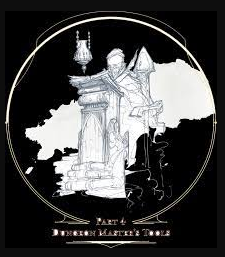There is a chance – but not a guarantee – that you will find one or more magic items during your adventures. A variety of magic items are described in this chapter, hinting at the extensive variety of magical items available in the worlds of D&D. Many more magical items are described in the Dungeon Master’s Guide.
An item that can be used as a magic item
The description of a magic item describes how it works. It is enough for a character to feel that something extraordinary about the item simply by handling it. An item’s properties can be revealed quickly by using the identify spell. Alternatively, a character can focus on one magic item during a brief rest while being physically in contact with the item. Following the rest, the character learns how to use the item and its properties. The only exception is potions; a little taste is all it takes to discover how they work.
Attunement
A creature must form a bond with certain magic items in order to use their magical abilities. There is a prerequisite for this bond, which is called attunement. To attune to an item, a creature must belong to the class described in the prerequisite. (If the class is a spellcasting class, the creature qualifies if it has spell slots and uses the spell list of that class.) If the requirement is to be a spellcaster. The creature qualifies if it can cast at least one spell using its traits and features, not using a spell item.
A creature gains only its nonmagical benefits without becoming attuned to an item that requires attunement, unless its description states otherwise. When a creature is not attuned to a magic shield. It provides the benefits of a normal shield, but none of its magical properties.
For a creature to attune to an item,
it must spend a short rest focused on only that item while it is physically in contact with it (this short rest cannot be the same as the rest used to learn the item’s properties). Focusing on weapons or wondrous items may take the form of weapon practice (for weapons), meditation (for wondrous items), or some other appropriate activity. This will result in the attunement not working. The creature gains intuitive knowledge of how to activate any magical properties of the item by the end of the short rest.
A creature can only be attuned to 3 magic items at one time. And an item can only be attuned to one creature at a time. A creature must end its attunement to an item before attuning to a fourth item. Further, an item cannot be attuned to more than one copy. There is a limit to how many rings a creature can synchronize at once, for instance.
If a creature no longer meets the requirements for attunement if the item has been more than 100 feet away for at least 24 hours, if the creature dies, or if another creature attunes to the item, its attunement ends. If an item is cursed, however, a creature can also end attunement voluntarily by spending another short rest focused on it.
Items worn and wielded
Wearing or wielding a magic item is one way to use its properties. Magic items meant to be worn must be worn as intended: boots and gloves go on the feet. Hats and helmets on the heads, and rings go on the fingers. A cloak must be fastened around the shoulders, a shield strapped to the arm, and armor must be donned. It is also necessary to hold a weapon.
Magical items can usually be worn by any creature, regardless of their size or build. It is easy to adjust magic garments, or they will adjust themselves to fit the wearer. Rare exceptions exist.
You can decide that an item does not adjust if the story suggests that it only fits creatures of a particular size or shape. Drow armor, for instance, might not fit elves. Items might be made available only to dwarf-sized and dwarf-shaped folk by dwarfs.
Read also:
